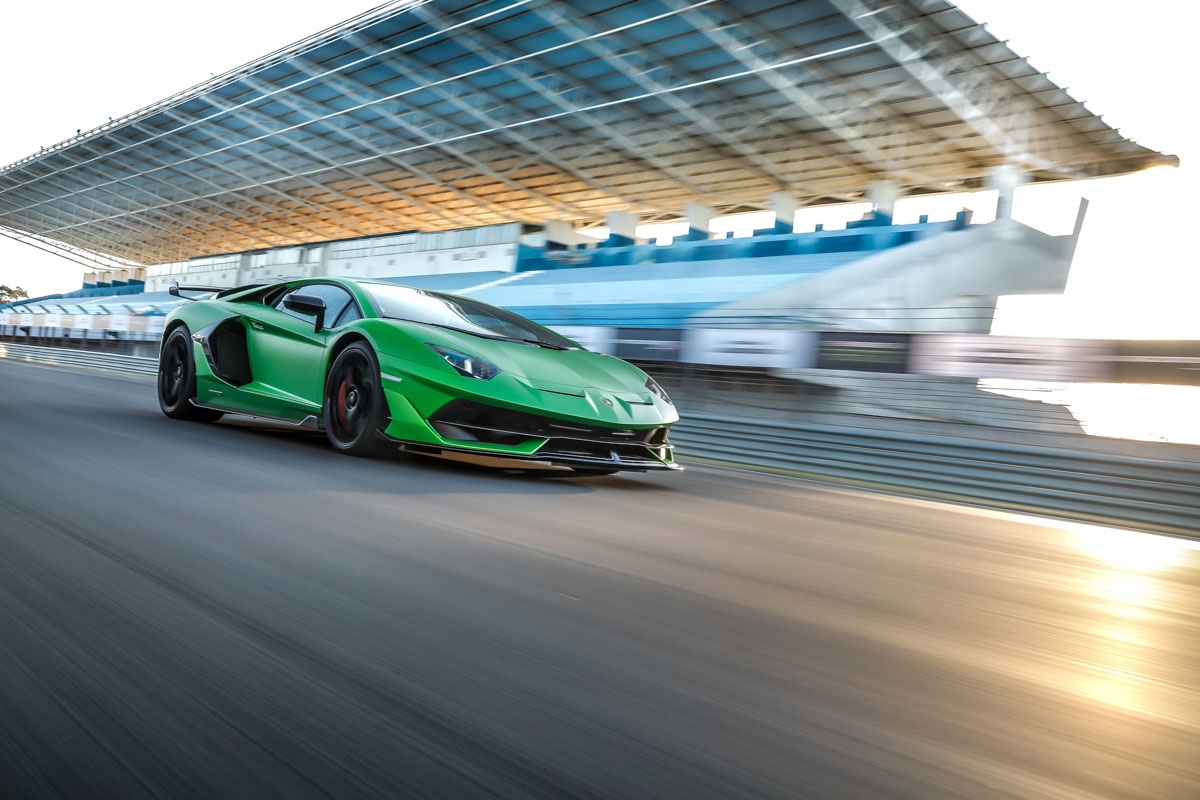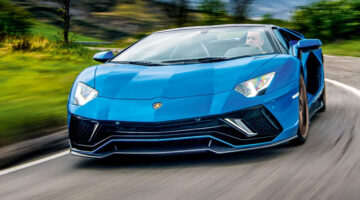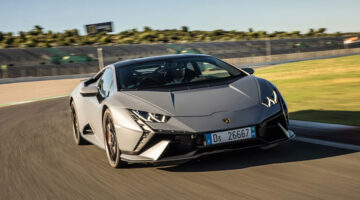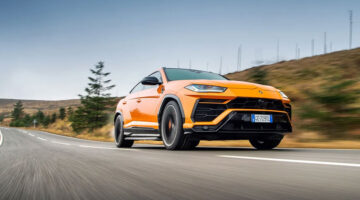| Exuberant V12, surprisingly agile and benign handling, strong brakes | |
| Antiquated gearbox, uncomfortable seat and driving position, visibility |
PRICE: $477,000
It’s the most powerful, and certainly the most sophisticated V12 Lamborghini to make production, and marks in all probability the final high point for the firm’s naturally aspirated V12. As such, it’s a moment to saviour, but what sort of car is the Lamborghini Aventador SVJ, and how has Lamborghini created a car that can snatch the Nurburgring Nordschleife lap record from Porsche’s grasp?
Engine, transmission and 0-100 time
As we’ll see, the SVJ has some fascinating engineering solutions contained within its brazenly jagged form. But even so, the heart of any Lamborghini has to be its engine and you’re unlikely to be disappointed by what lurks beneath the SVJ’s complex engine lid.
The 6.5-litre motor has received another round of modifications aimed at squeezing not only more power from it, but also improving torque lower down the rev range and reducing the inertia of its internals. To that end, the V12 features titanium valves for the first time, teamed with a redesigned cylinder head, intake manifold and exhaust, the latter shorter in length and exiting higher at the rear, plus a lighter flywheel. The stats say the SVJ makes 20bhp and 22lb ft more than the old SV, with 760bhp at 8,500rpm (200rpm short of the limiter) and 531lb ft of torque at 6,750rpm. While that peak torque figure is over 1,000rpm higher than before, Lamborghini’s own graph suggests a healthy extra surge at both 4,500- and 6,500rpm over the old machine.
As you’d expect, the SVJ retains the long-serving automated single clutch gearbox, albeit with calibration changes. The 0-100kph figure is unchanged over the old SV (at 2.8-seconds), while 0-200kph takes 8.6 seconds and the top speed is ‘over 349kph’.
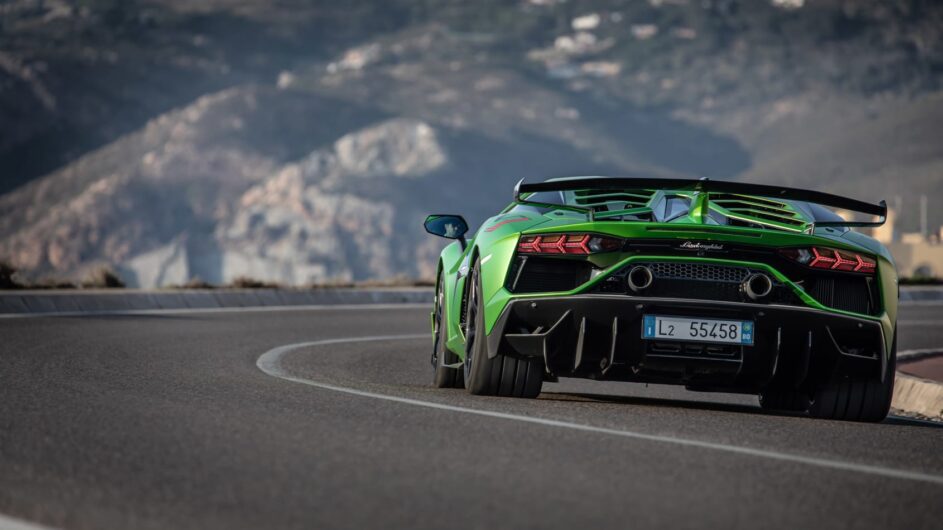
Technical highlights
The core of the SVJ’s performance is the integration of its various systems under one umbrella (LDVA 2.0). Headlining here is ALA 2.0, a further evolved version of the active aerodynamics system first seen on the Huracan Performante. In simplistic terms, ALA features two slots in the nose of the car, with a further intake down the spine above the engine lid. With all these intakes closed the extended front splitter and large rear wing work as normal, increasing downforce by 40% compared to the old SV. However, when the car is accelerating on a straight the front flaps open, preventing most of the air from going up and over the cockpit. This reduces the pressure on the splitter, forces air under the car (where it is carefully managed with a flat floor and a new, larger rear diffuser), and reduces drag. At the rear, the flap opens, allowing air to rush into a Y-shaped structure that’s bifurcated, sending air into the actual structure of the rear aerofoil where it is then blasted out of tiny holes. These create vortices that disturb the air flowing over the underside of the wing, effectively ‘stalling’ it and thereby greatly reducing the drag. Clever stuff, and moreover, the left- or right-hand side of the wing can be worked independently, increasing grip on the inside rear wheel when turning into a corner.
It’s at this point that the integration is critical, because ALA works with the magnetic damping, the rear-wheel steering, the dynamic steering and the four-wheel drive system to get the car in, through, and out of a corner significantly quicker than the old SV. Unlike other Aventadors, the centre clutch disengages completely under braking to give a more natural feel, while the benefits of a more agile turn in and higher grip levels (especially on the new bespoke Pirelli Trofeo R tyre, although a bespoke P Zero Corsa is standard fit) mean that the system sends torque to the front axle earlier to pull the car out of the corner.
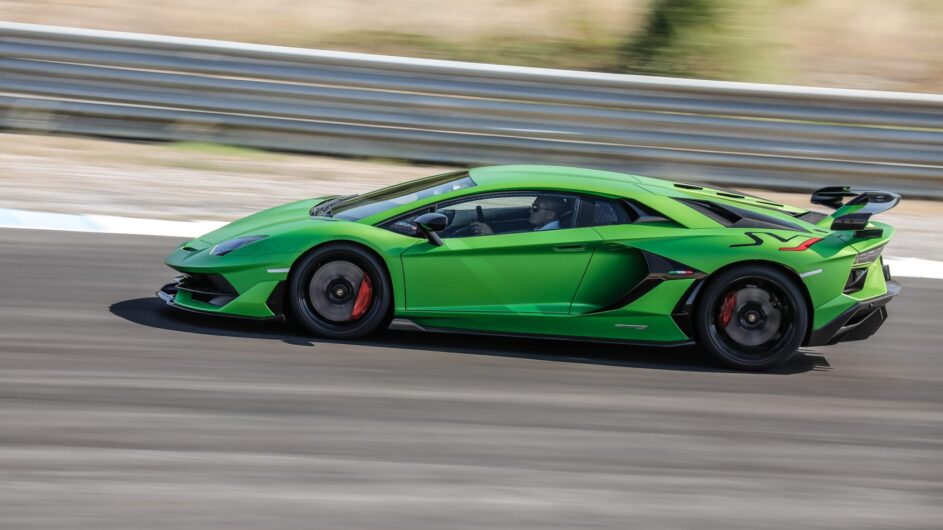
Much of the hardware in the SVJ is familiar, but it’s in the detail where the differences matter: anti-roll bars are stiffer, but spring rates are the same (as the S and SV); the dampers are recalibrated and operate over a wider bandwidth; the rear-wheel steer operates up to a smaller angle than on the S variant, and the ratio of the dynamic steering is fixed in the car’s Corsa mode. At 1,525kg ‘dry’, the SVJ weighs the same as the SV, but extensive use of carbon fibre and lighter wheels has essentially offset the weight penalty of incorporating the additional tech.
What’s it like to drive?
For all the talk of active aero and sophisticated electronics, there can’t be many who wouldn’t feel at least a slight pang of trepidation when the SVJ rolls to a stop next to you in the Estoril pitlane. Lamborghini’s senior supercars have always possessed that intimidation factor, and long may it continue: it’s an essential part of the recipe. Up goes the scissor door, and as I sink into the hard embrace of the bucket seat I’m reminded once again at how comically uncomfortable these pews are, how short the Aventador is on headroom for drivers over six foot in height, and how visibility is compromised by the girder-like A pillars. In fact, it’s now even worse, because with all the ALA ducting rearward visibility is virtually non-existent, and the side mirrors are, as ever, mainly full of chiseled flank. The Aventador remains, in the truest sense, a proper supercar.
In fairness, the SVJ is hamstrung today even before it has left the pitlane, because the Estoril circuit was resurfaced in its entirety a fortnight ago and the virgin tarmac offers substantially less grip than it did earlier in the summer. Lamborghini has also elected to fit Corsas to all the cars in the name of durability, the result being that the SVJ howls in protest when too much is asked of the front tyres and its ultimate performance remains tantalisingly out of reach.
Nevertheless, some things are clear. The motor is an absolute force of nature: it does pull with a little more conviction from the mid-range, but it’s still all about the lunge for the redline, something it does with frenzied enthusiasm. Hook the sturdy right-hand paddle for the next gear and it thumps home without much grace, but the engine revs drop straight back into the meat of the powerband and the process beginning again unabated. The engine noise at 8,500rpm from within the cabin is all consuming, and from the outside it’s utterly spectacular.
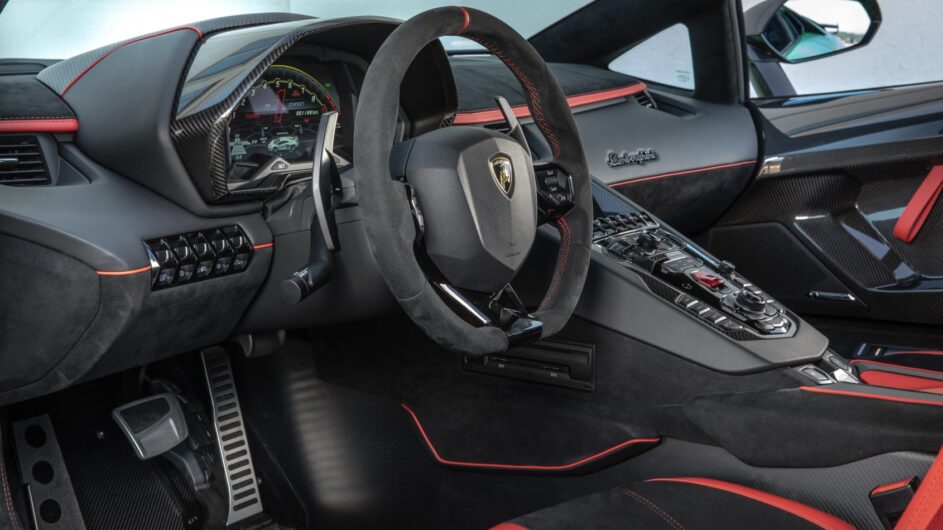
Brake hard from high speed and you can feel the weight of the V12 behind you, the car yawing gently, suddenly alive and on its tip toes. The giant ceramic brakes have a softer pedal feel than, say, one of McLaren’s more aggressive offerings, but there’s good modulation on offer and no questions over their outright stopping ability. From the moment you turn the wheel into the corner the SVJ feels surprisingly agile, and it’s worth taking a moment to finesse your inputs at this point because driving the SVJ only requires small inputs most of the time. Traction out of the corners is equally impressive, but it’s the balance of the car that really makes it so enjoyable. If you’ve gone in too hot to a corner a small lift of the throttle has a surprisingly large influence on the trajectory of the car, without it feeling nervous. There’s rarely a feeling of the engine’s weight threatening to overtake the front – in slow and medium speed corners, at least. Near its limits it’s surely still a car that demands the utmost of respect, but there’s always the invisible safety net of the esp system to rely on. Indeed, so deft is its operation that the ‘Ring lap time was recorded with some of its assistance left in place.
Price and rivals
The limited run of 900 SVJs are priced at $477,000 each, with the special edition ‘63’ car at $583,000 (quite a premium for a painted livery and visible carbon fibre). As usual, this puts Lamborghini’s top offering somewhere in between the usual supercar rivals, and track-biased hypercars like the McLaren Senna.
This article originally appeared at evo.co.uk
Copyright © evo UK, Dennis Publishing

